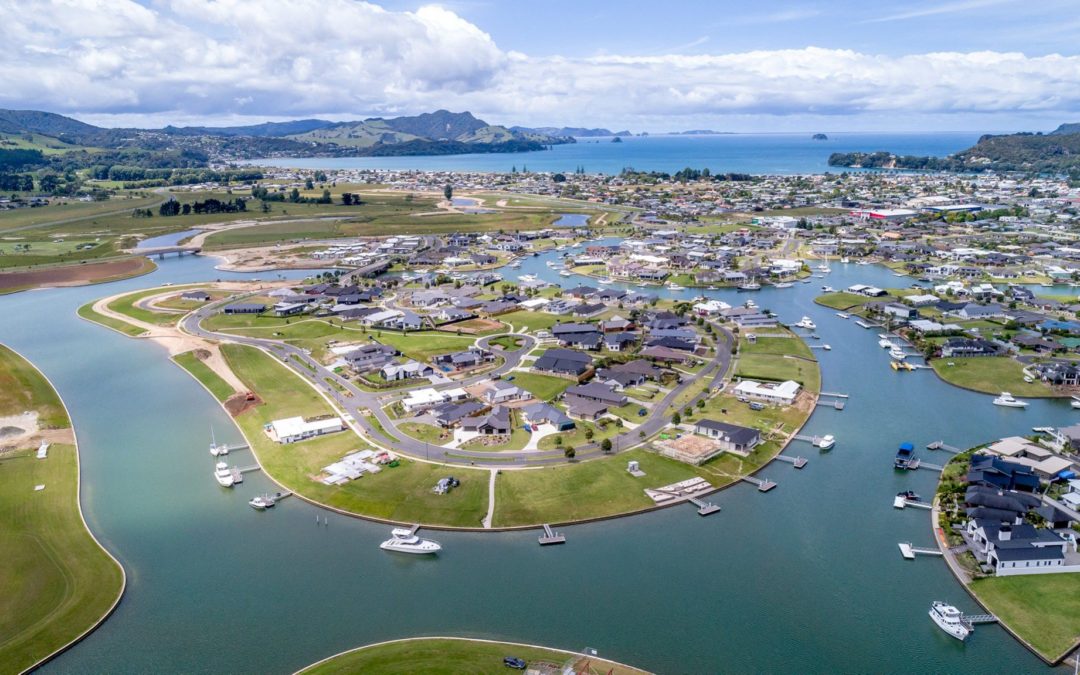Climate change begets more frequent severe weather and flood events, whose capacity for destruction should check coastal development—but it hasn’t. Instead, the same actors (developers, engineers, architects) respond by building higher or stronger, elevating a mantle of “resiliency” that absolves us from attending to the pressing challenge at hand: dramatically restructuring how we inhabit space in a changing world.
Adapt to climate change – we must. The big question is whether the extent of our adaptations to the forecasted changes will be timely enough. In a recent article written by Virginia Hanusik in ‘The Architects Newspaper’ (Oct. 2020) – she draws attention to architecture’s obstinacy in the face of climate change that in her words ‘normalises the precariousness of coastal living’.
In the United States, coastal counties are home to 40 percent of the country’s population, the area itself accounts for less than 10 percent of the nation’s contiguous landmass. For decades, developers, oil magnates, engineers, and architects sought to subdue the natural environment through various means, with little thought to ‘downstream’ effects.
In South Louisiana, the degradation and exploitation of landscapes by the fossil fuel industry have already led to the forced migration of communities to higher ground, calling into question whether the social ties and lived history of a place can be reproduced elsewhere.
The images presented in Virginia Hanusik’s project entitled: A Receding Coast: The Architecture and Infrastructure of South Louisiana, explore the visual narrative of the climate crisis, the engineered habitats society have adopted in order to live on or close to water, the limits of such development, and the emotional ties that keep us connected to these liminal spaces.
From Hanusik’s analysis of architecture and land use across the coastal areas of the United States, patterns begin to emerge that speak both to the precariousness of living on the edge and the normalization of that precariousness. In New Zealand, our love of, preoccupation to, and attitude towards living at the coast despite the obvious risk – isn’t too dissimilar.
Like the mid-19th century paintings of the Hudson River Valley that depicted scenic idyll outside New York City or Carleton Watkins’s early photographs of the West that were used as propaganda for expansion, a visual culture was used to turn the coast into a commodity. In his 2019 book The Geography of Risk, Gilbert M. Gaul describes how developers lured middle-class Americans out to Long Beach Island, New Jersey, through advertisements depicting humble beach bungalows with modern amenities. After World War II and for generations thereafter, the increase in mobility caused waterfront property to become certain Americans’ primary leisure destination, though value did not, and does not, account for the real level of risk.
As the recent wildfires in California demonstrate the consequences of high-risk development to meet the state’s housing demand, cliff architecture along the Golden Coast represents another type of architectural precariousness.
Architects Worldwide Declare a Climate + Biodiversity Emergency
In May 2019, 17 renowned architecture firms launched a declaration of a climate, justice, and biodiversity emergency now known as Construction Declares. The group includes architects, engineers, and more disciplines who all signed a pledge that would define and expand sustainability efforts of future works.
Soon after the original UK Architects Declare, similar groups formed across the globe (including members of the New Zealand architecture community) as others used the Declare name to make an impact on the profession and the world.
This belief was summarized into 11 core changes or requirements. The requirements as established by UK Architects Declare include:
- Raise awareness of the climate and biodiversity emergencies and the urgent need for action amongst our clients and supply chains.
- Advocate for faster change in our industry towards regenerative design practices and a higher Governmental funding priority to support this.
- Establish climate and biodiversity mitigation principles as the key measure of our industry’s success: demonstrated through awards, prizes and listings.
- Share knowledge and research to that end on an open-source basis.
- Evaluate all new projects against the aspiration to contribute positively to mitigating climate breakdown, and encourage our clients to adopt this approach.
- Upgrade existing buildings for extended use as a more carbon-efficient alternative to demolition and new build whenever there is a viable choice.
- Include life cycle costing, whole-life carbon modeling and post-occupancy evaluation as part of our basic scope of work, to reduce both embodied and operational resource use.
- Adopt more regenerative design principles in our studios, with the aim of designing architecture and urbanism that goes beyond the standard of net-zero carbon in use.
- Collaborate with engineers, contractors, and clients to further reduce construction waste.
- Accelerate the shift to low embodied carbon materials in all our work.
- Minimize wasteful use of resources in architecture and urban planning, both in quantum and in detail.
Architects of the NZ Institute taking an increasingly proactive stand on climate change
In a recent (Jan. 15th, 2021) editorial article by Chris Barton in ‘Architecture New Zealand’ he outlines the stand taken by Te Kāhui Whaihanga New Zealand Institute of Architects (NZIA) on the climate crisis and in particular, some of its objections to the Ministry of Business, Innovation & Employment’s (MBIE’s) Building for Climate Change (BfCC) programme which aims to increase the operational efficiency of buildings and to reduce the embodied carbon across the life cycle of buildings – a process that will be phased in gradually until a final cap is set in 2035.
Of concern to NZIA was the proposal to include only new buildings initially in its operational efficiency requirements, arguing that requiring changes to existing buildings on alterations and renovations will help to meet our climatic goals, plus provide much-needed social and health improvements for much of our older housing stock. Buildings that exist in 2020 are predicted to make up 65 per cent of New Zealand’s building stock in 2050 and generate a similar proportion of emissions.
The editorial goes on to say that getting any speedy, effective alterations to our building codes and practices to combat this crisis ‘looks nigh on impossible’. Barton mentions that ‘perhaps Snøhetta co-founder Kjetil Trædal Thorsen’s dire predictions are right – that the architectural industry will not be able to change rapidly enough to play its vital part in reversing the impact of global warming’. Then there’s the feud among signatories to the Architects Declare climate change network, with ‘starchitects’ Foster + Partners and Zaha Hadid Architects withdrawing from the group over whether or not designing airports is compatible with decarbonisation goals.
As sea levels rise and stronger, more frequent severe weather events threaten the physical fabric of the coasts, how will our mental and emotional connections to these landscapes change? And how can architecture preserve the memory of these disappearing places while promoting solutions to dwelling under climate change that are more harmonious with the natural world?
Like climate change – time will tell …
If you want to know if coastal instability and erosion will affect your existing coastal property, or perhaps property you’re intending to purchase – then allow us to assist you. Contact Geohazard Assessment Services to arrange an expert and affordable site-specific geohazard inspection and assessment – ‘know the ground beneath your feet’


Recent Comments